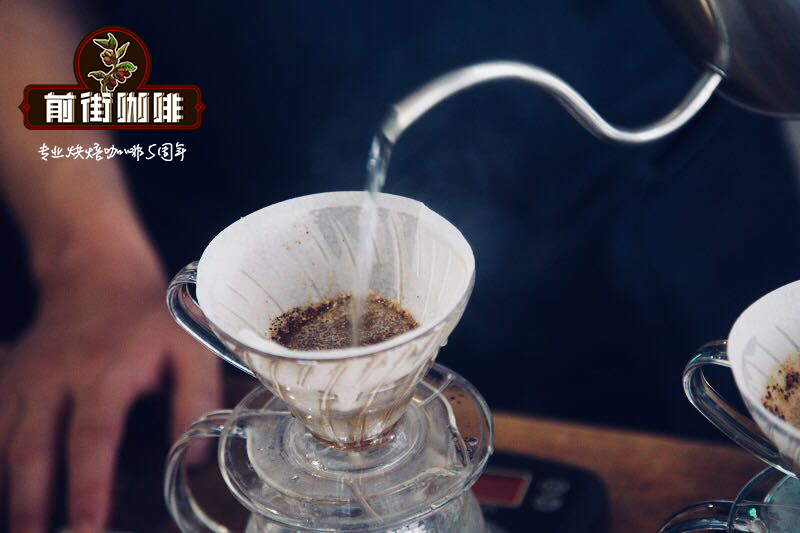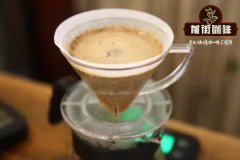Full of ritual brewing coffee what is hand-brewed coffee tutorial

Professional coffee knowledge exchange more coffee bean information please follow the coffee workshop (Wechat official account cafe_style)
Professional coffee knowledge exchange more coffee bean information please follow the coffee workshop (Wechat official account cafe_style)
Hand coffee, is another interpretation of coffee, is a gentle extraction of coffee. The charm lies in the charm and focus of the whole process. You can ignore the troubles around you and get a moment of peace. No matter what kind of hand pulping method, there is a theory and significance of existence, but there is only one purpose and principle: to better release the flavor of coffee.
If your hands are not focused enough, you can't make a good cup of coffee. But in addition to due focus, there is also a need for "gentleness". This kind of "gentleness" refers to the delicate grasp of the process, such as the amount of coffee beans, the degree of grinding, water temperature, water quality, water flow, extraction time, and even the technique and timing of water injection.
The flavor of coffee must depend on the following points: 1. The speed at which water flows through coffee powder; 2. The temperature of the current; 3. The thickness and state of the powder; 4. The depth of baking degree; 5. The length of baking time; 6. Some details vary according to different coffee utensils.
The difference between hand-brewed coffee and espresso is that hand-brewed coffee is a pressure-free free-fall extraction. In the whole extraction process, the speed of water passing through coffee powder is the key to extraction. The shorter the roasting time of the coffee beans, the higher the carbon dioxide content in the coffee during the fresh cycle, or the deeper the coffee is roasted. During extraction, coffee releases a large amount of carbon dioxide, isolating the gaps between coffee particles and forming a filter layer that allows water to pass through to produce extraction. If the coffee powder is ground too fine, it will produce a sand effect, and the infiltration space of water flow is small, which affects the flow rate. The higher the water temperature, the greater the carbon dioxide produced and released, and the faster the flow permeates. On the contrary, the lower the water temperature is, the slower the infiltration speed is. Excessive extraction and insufficient extraction in the process of hand extraction, only 30% of the coffee ingredients can be extracted, and the remaining 70% has not been precipitated. Of the 30% of the soluble matter, we only need about 12%, and more than that is counted as over-extraction, resulting in excessive bitterness or excess odors, such as soil and leaves. On the contrary, the lack of extraction is due to the fact that the flow of water through the coffee powder is too fast, so less soluble matter is precipitated, resulting in a light and sour taste of coffee. To sum up: many methods of coffee brewing are not to regulate the flavor, but to adjust the speed and proportion of water passing through the coffee powder, so as to adjust the amount of coffee flavor released. The flavor of coffee is determined by the producing area, treatment method and roasting method of coffee beans.
Important Notice :
前街咖啡 FrontStreet Coffee has moved to new addredd:
FrontStreet Coffee Address: 315,Donghua East Road,GuangZhou
Tel:020 38364473
- Prev

How to use KONO filter Cup how to use KONO filter Cup to make Coffee Coffee filter Cup
Professional coffee knowledge exchange more coffee bean information Please pay attention to the coffee workshop (Wechat official account cafe_style) different from other hand brewing methods, the KONO hand brewing method does not need to be steamed, but with a special hand brewing pot and a tapered filter with short ribs, with a single hand brewing method. The whole process is continuous and gradual, and so is the thickness of the flow. To subdivide, from the tiniest and smallest
- Next

How to drink a cup of coffee taste coffee coffee what is the taste of coffee coffee aroma
Professional coffee knowledge exchange more coffee bean information please follow the coffee workshop (Wechat official account cafe_style) exquisite "slow" life fast pace urban life needs a little slow to reconcile wine eater coffee walk daily is for the seven flavors of life. "drinking coffee" is supposed to be an amorous affair. Hand-made coffee, because of the investment of time and wisdom, more
Related
- Beginners will see the "Coffee pull flower" guide!
- What is the difference between ice blog purified milk and ordinary milk coffee?
- Why is the Philippines the largest producer of crops in Liberia?
- For coffee extraction, should the fine powder be retained?
- How does extracted espresso fill pressed powder? How much strength does it take to press the powder?
- How to make jasmine cold extract coffee? Is the jasmine + latte good?
- Will this little toy really make the coffee taste better? How does Lily Drip affect coffee extraction?
- Will the action of slapping the filter cup also affect coffee extraction?
- What's the difference between powder-to-water ratio and powder-to-liquid ratio?
- What is the Ethiopian local species? What does it have to do with Heirloom native species?

